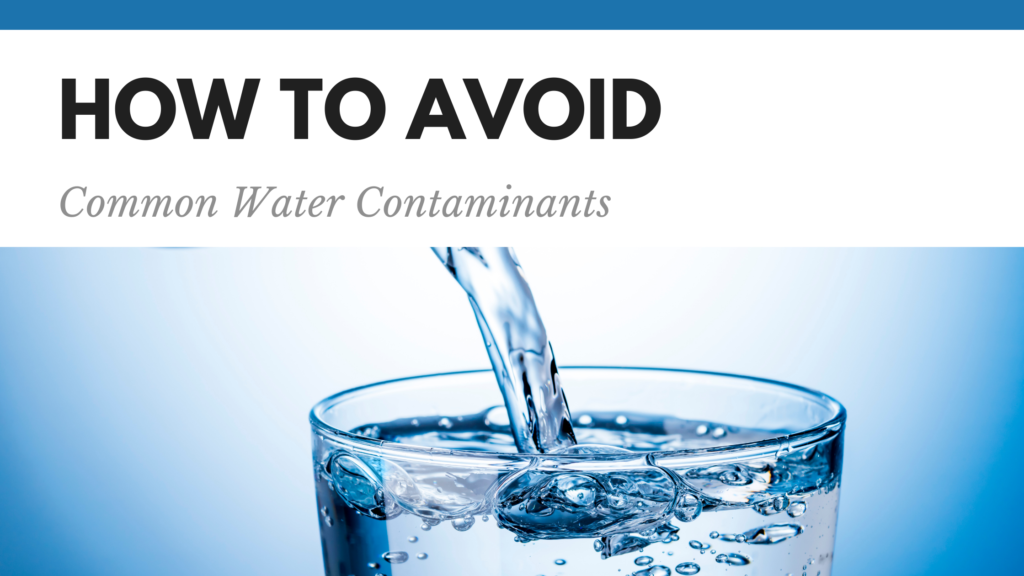How to Avoid Common Water Contaminants

Identifying and knowing how to avoid the most common drinking water contaminants in your tap water is important as a homeowner. We have worked with thousands of people to help them improve their drinking water quality and protect their family from consuming contaminants in the water that they have or potentially could face down the road.
Your drinking water is of the utmost importance. But, when was the last time you sat down and read your entire water quality report? The last time you truly educated yourself and your family on the water in your home and in your area? Do you have concerns?
The point of this blog is not to create any panic. Instead, we want to create awareness of drinking water quality and help educate homeowners on common water contaminants that could pose a risk. Awareness ignites change and change in this case is for the better. High quality drinking water is always better than the alternatives and outcomes.
What are we hearing in the news?
Homeowners right now may hear about water contaminants like arsenic, nitrates, lead, PFAs, fluoride and even pharmaceuticals in public drinking water, as well as nitrates and bacteria in private wells. We know that state and federal laws like the Safe Drinking Water Act are meant to help protect our drinking water. But, there are still situations where contaminants show up. Laws do not guarantee that standards are followed or enforced, or that public water treatment never fails.
How are contaminants categorized?
Drinking water contaminants are often broken down by the following categories: primary, secondary and emerging.
Primary water contaminants include (but are not limited to):
- Microorganisms like coliform bacteria (i.e. E.coli), cryptosporidium, giardia, legionella, and enteric viruses which can be treated with chlorination and UV treatment.
- Inorganic compounds like arsenic, chromium, copper, chlorine, chloramine, fluoride, lead, mercury, nitrates, and nitrites, treated well with a reverse osmosis drinking water system. It is important to point out that inorganic compounds which could pose a health risk can be difficult to identify – they are often colorless, odorless and tasteless. Homes with private wells MUST have their water tested annually. And, residents on a public system should check their water quality report annually as well.
- Organic compounds like agricultural chemicals, pesticides, and industrial chemicals which are commonly treated with activated carbon and reverse osmosis.
Secondary water contaminants include (but are not limited to):
- Aluminum, iron, manganese, sulfur, calcium, magnesium – treated with water softeners and other water treatment systems right in your home.
Emerging water contaminants include (but are not limited to):
- Manganese, pharmaceuticals, personal care products, PFAs and PFOAs
What do we do for now?
In the United States, we are fortunate to have decent drinking water in many areas. However, many could also use some improvement. Many of the drinking water contaminants listed above do not occur all at once or maybe even ever. But, they do pose potential health risks. Some can cause widespread and serious illnesses. Others can cause cancer or other serious illness with prolonged exposure.
Whether your contaminants are happening due to failed water treatment, or from human and animal waste into groundwater sources, increasing water treatment right in your home can help eliminate the health and quality risks right away. Experts say that microorganisms and chemical compounds in the environment can and will for the immediate future, contaminate drinking water supplies. Infants, children, the elderly, and immune-compromised people are particularly susceptible to serious health effects from contaminants in drinking water.
Contact one of our experts to discuss your concerns, your goals and your water needs. Whether you’re looking for a RO system or even a water softener, we can guarantee that our products will reduce the risk (or the presence) of common water contaminants and improve the overall quality of your drinking water. We can test your water and work WITH you to determine which of our eco-friendly and innovative drinking water products is right for you. Invest in your own drinking water now, before any other unknown exposure occurs or before any public health issue arises.


